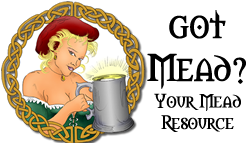I have made hundreds of gallons of wine/mead but make only a batch or two of beer each year. I often put wine/mead into beer bottles.
About three weeks ago I bottled an encore batch of bourbon barrel porter. It is absolutely delicious again, but totally flat this time. I used only USA (as opposed to European) crown top bottles, oxygen barrier crown caps (USA size, flag design), and a Super Agata Bench Capper. I filled one 24 ounce PET bottle to test for firmness, along with two cases of 12-ounce glass bottles. The PET bottle became rock hard after two weeks, indicating good carbonation, and proved to be perfect upon opening/drinking. The capper left a dimple in the bottle caps, as before, which had never caused a problem previously. Sediment in the glass bottles indicate the natural carbonation progressed as it should. The capping process also felt “normal”. Does this appear to be a bad batch of crown caps?
More importantly, what to do at this point? Right now I am planning to purchase some “carbonation drops” (just sugar) for re-carbonation and slowly decant two 12-ounce beer bottles into each 24-ounce PET bottle, with one "drop" per 12 ounces. The Wyeast 1728 Scottish Ale yeast should be able to handle ABV of up to 12%. Right now the brew sits at ~ 7.1% and the re-carbonation should add about 0.5% ABV. I also plan to use six 12-ounce glass bottles with different colored bottle caps to test if it is capper problem versus a bottle cap problem.
Please provide insight as to if my plan to “Save the Beer” is sound. If you have a better solution, I would love to hear it. Thanks and “cheers”!
About three weeks ago I bottled an encore batch of bourbon barrel porter. It is absolutely delicious again, but totally flat this time. I used only USA (as opposed to European) crown top bottles, oxygen barrier crown caps (USA size, flag design), and a Super Agata Bench Capper. I filled one 24 ounce PET bottle to test for firmness, along with two cases of 12-ounce glass bottles. The PET bottle became rock hard after two weeks, indicating good carbonation, and proved to be perfect upon opening/drinking. The capper left a dimple in the bottle caps, as before, which had never caused a problem previously. Sediment in the glass bottles indicate the natural carbonation progressed as it should. The capping process also felt “normal”. Does this appear to be a bad batch of crown caps?
More importantly, what to do at this point? Right now I am planning to purchase some “carbonation drops” (just sugar) for re-carbonation and slowly decant two 12-ounce beer bottles into each 24-ounce PET bottle, with one "drop" per 12 ounces. The Wyeast 1728 Scottish Ale yeast should be able to handle ABV of up to 12%. Right now the brew sits at ~ 7.1% and the re-carbonation should add about 0.5% ABV. I also plan to use six 12-ounce glass bottles with different colored bottle caps to test if it is capper problem versus a bottle cap problem.
Please provide insight as to if my plan to “Save the Beer” is sound. If you have a better solution, I would love to hear it. Thanks and “cheers”!






